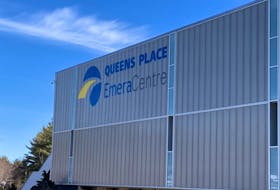BARRINGTON, N.S. — There’s still ample funding available to the Nova Scotia seafood industry under the Atlantic Fisheries Fund (AFF) for innovative projects that improve quality, productivity and sustainability in the harvesting, processing and aquaculture sectors.
“We’re trying to create awareness and interest,” said Brennan Goreham, AFF director for the provincial Department of Fisheries and Aquaculture, in a presentation at the Municipality of Barrington’s committee of the whole meeting Dec. 2.
“The fact that I am reaching out and proactively conducting awareness and outreach should send the signal that ample funding is still available under the program. If we had more demand than resources, I’d be in retreat mode, not outreach mode,” he said.
Jointly funded by the federal government and the Atlantic provinces, upwards of $400 million in funding is available through the AFF across Atlantic Canada. Nova Scotia’s share is 30 per cent, so between $120- and $130-million can be given out to Nova Scotia companies over a seven-year period, said Goreham. “We are in year three right now. We have until March 2024.”
The fund “offers fairly generous opportunities,” said Goreham. For instance, contributions less than $100,000 for commercial enterprises are non-repayable.
Examples of projects approved in the harvesting sector include automated long lines and sustainable harvesting technology, various onboard handling equipment related to improving the quality of fish when harvested (such as live wells for holding lobsters), electronic and new technology adoption for increasing efficiencies, and pilot testing alternative, said Goreham.
The acquisition of automated grading equipment for oysters, productivity and efficiency improvements in grow-out gear for shellfish aquaculture, adoption of new technologies to upgrade grow-out sites and hatcheries (shellfish and finfish) and research on innovative solutions for treatment of sea lice (finfish) are among the projects approved for the aquaculture sector under the AFF.
In the processing sector, new technology and state-of-the-art processing equipment to gain efficiencies and automate as well as reduce energy consumption, new technology for live lobster holding, and the acquisition of automated live lobster grading systems are some of the projects approved.
Goreham said new technology for shipping and grading machines is now available so “every lobster that crosses the scale gets recorded and populated in an inventory management system to the point you can put tags on all your crates, scan them, have the guys on the lobster cars with iPads and scanners weighing and scanning the crates.
“The next morning that information is in the office, so you don’t have people running up and down the lobster cars with a handful of paper,” he said. “That’s a big piece we’re interested in for a lot of reasons.”
Goreham said the department recognizes labour is often a challenge for a number of seafood companies, be it on the water or in the plant.
“We want people to be able to do more with the same amount of labour. We’re not looking to displace labour, but, in some cases, adopting new technologies, processes or equipment to improve effectiveness and sustainability make the employment more attractive.”
In addition to commercial enterprises, non-commercial organizations, Indigenous organizations or groups (other than commercial), industry associations, research and academic institutions and other non-government organizations that support the seafood sector can apply for funding for eligible projects.
Ample funding still available for seafood industry
Funds available through the Atlantic Fisheries Fund

STORY CONTINUES BELOW THESE SALTWIRE VIDEOS
Two accused teenagers to remain in custody for at least two more weeks | SaltWire #newsupdate #news








